Catherine Cheetham, Melody Elliott, Alan Harper, Mika Ito, Tokai University, Japan
Cheetham, C., Elliott, M., Harper, A., & Ito, M. (2017). Accessibility and the promotion of autonomous EFL reading. Studies in Self-Access Learning Journal, 8(1), 4-22. https://doi.org/10.37237/080102
Retrieved from https://sisaljournal.org/archives/mar17/cheetham_et_at
[Download paginated PDF version]
Abstract
Motivating English as a foreign language (EFL) students to read in English extensively can be a difficult task. EFL educators often use a wide range of methodologies to encourage their students to continue reading. Many of them also seek ways to motivate their students to engage in extensive reading (ER) autonomously. This paper presents a study of a private Japanese university’s ER program which uses graded readers through a mobile library cart system as well as a main library. The study utilized 2,075 student reading records and a survey of 755 Japanese EFL students in 75 required 1st and 2nd year EFL classes to better understand how the main and mobile libraries affected student ER. Results indicate that the main library plays an important role in the ER program by making students responsible for their own learning and initiative. However, the mobile library proves to be more successful at getting students to engage in ER and develop autonomous reading skills.
Keywords: extensive reading, mobile library, MReader
One of the key objectives in education is developing learner autonomy, a central feature of which is allowing students the freedom to select learning resources, so they can take charge of their own learning (Broady & Kenny, 1996; Ellis & Sinclair, 1989; Matsubara & Lehtinen, 2007). An extensive reading (ER) program in which learners engage in quantitative pleasure reading is an ideal way of doing so (Bullard, 2015). By providing access to simplified texts intended for language learners such as graded readers, students may develop the ability to work autonomously by choosing what, when, and how they will read. However, simply providing access to graded readers doesn’t necessarily guarantee that learners will engage or develop autonomous learning (Shibata, 2015). How an institution establishes, maintains and invests in its ER library may result in very different learning outcomes. While many institutes and teachers tend to favor centrally-located libraries that demand less teacher maintenance and rely heavily on student self-interest, an alternative is a more labor-intensive ‘mobile’ library. A mobile library provides guidance and support for learner autonomy by bringing graded readers to the classroom.
Having a source of two libraries: the university’s centrally located main library and the university education center’s ER mobile library, the authors wished to examine how each library promoted student ER. Utilizing MReader, a learning management system designed for ER, and results from a student survey, data was gathered from 75 classes that used either the mobile or main library over the course of a 15-week semester (spring 2015, fall 2015, and spring 2016). This paper examines the differences between the mobile and main library in regard to reading outcomes (e.g. total number of words read and reading consistency) and students’ overall perceptions towards graded readers to gain insight into the benefits and drawbacks of both libraries.
Literature Review
Extensive reading and accessibility
ER is an approach that has been defined as quantitative pleasure reading in L2 over an extended period of time (Day & Bamford, 1998). In this way, learners may improve their language abilities by reading simplified texts, generally in the form of graded readers that contain a high frequency headword count. In accordance with ER practices, words and sentences should be processed without dictionary assistance, and usually 98% fluency and efficiency (e.g. 3-6 unknown words out of 300) is required (Grabe, 2009). As learners select books that are of interest on various topics which are enjoyable and level appropriate, they begin the process of autonomous learning.
Although many studies cite considerable benefits of ER, immediate results may be insignificant (Davis, 1995). Instead, educators must take into account the long-term benefits that ER affords. By creating opportunities for students to access a library, not only do institutions effectively assist language skills but they also provide a means for learners to increase their contact with English (Bullard, 2015). Having easy access to interesting reading materials such as graded readers that appeal to learners’ ever changing interests is important (Stoller, 1994).
Motivation and autonomous learning
Motivation within language learning is a mixture of mental processes, emotions, social situations, and language identity (Dörnyei & Ushioda, 2011). Motivation is complicated, especially in regards to ER as intrinsic and extrinsic motivation are both significant. Intrinsic motivation engages the learner through curiosity and immersion, while recognition, grades, social motives, competition, and fulfillment are all extrinsic factors (Grabe, 2009). Undeniably, learner motivation changes with each reading experience, classroom context, and learning outcome (de Burgh-Hirabe, 2011; Dörnyei, 2001; Judge, 2011). Regardless of what initially motivates a learner, “positive influences are fragile and easily overshadowed by the negative influences” (de Burgh-Hirabe, 2011, p. 186). In other words, negative influences such as other course demands will take priority over pleasure reading. In order for a learner to be an autonomous reader, it is essential that they have a positive L2 reader identity in which the reader develops an interest in L2 reading (Lake, 2014). ER approaches are beneficial although they rely on learners to be highly motivated, resulting in discrepancies in learning outcomes (Kirchhoff, 2013). Obviously, not all learners are self-motivated, and persuasive tactics may be required to remind them to read or to encourage them to read more (Stoller, 1994).
Essentially, teachers need to assist learners to take responsibility or be self-regulating of their own learning by defining learning objectives, developing learning strategies, and effectively using language materials (Khodabandehlou, Jahandar, Seyedi, Mousavi, & Abdai, 2012). A learning management system such as the Extensive Reading Foundation’s MReader enables learners and teachers to monitor ER usage. After reading, readers answer simple comprehension questions to assess whether they read the book or not. MReader provides the reader with instant feedback in the form of game-like features such as a progress bar and stamp collection application that show students their progress. As an external incentive, such evaluation can promote autonomous learning that is personally rewarding (Stoeckel, Reagan, & Hann, 2012). MReader can be used to make ER relevant to a particular curriculum and also motivate and engage students (Robb, 2015).
Research Setting
The research was conducted at a private Japanese university, which has a unified required English curriculum for all freshmen and sophomores (approximately 12,000 students per year). In 2003, a graded reader committee was established to create and manage the university’s ER program to enhance language skills, facilitate reading fluency, and make L2 reading accessible and enjoyable. Since that time, the number of students and classes using graded readers has substantially increased. At the beginning of each term, teachers may choose to either use the main library or the mobile library for their student’s ER needs. To help students become autonomous learners, MReader was introduced in 2014.
Extensive reading mobile library
Currently, the mobile library has 15,000 graded readers with over 1,400 titles sorted into 10 levels based on the publishers’ headword count. The mobile library uses shopping carts with two baskets containing approximately 180 books (both fiction and non-fiction) from several publishers such as Cambridge, Cengage, Compass, Oxford, Penguin, and Scholastic. The selection of books in the carts is tailored according to the language abilities of students in the class. For basic level classes, book levels range from 75 to 300 headwords, intermediate ranges from 300 to 800 headwords, and advanced from 700 to 2,200 headwords. These books are color coded to assist students in finding a level appropriate book. These carts are brought to class once or twice a week and are shared by up to three or four classes with similar level language abilities. Over the 15-week semester, the graded reader committee recommends teachers to allocate 15 to 20 minutes of class time once or twice a week for book selection and to allow time for possible in-class reading. The committee suggests that students be encouraged to take up to three books home a week or visit the main library for different titles.
Extensive reading main library
The university main library is centrally located and easily accessed on the 500,000 square meter campus and uses the same color coding system for graded readers as the mobile library with many of the same titles and publishers. The main library has a collection of over 10,000 graded readers, both non-fiction and fiction, at all proficiency levels. Students are permitted to check out five graded readers at one time in addition to other reading materials. At the beginning of each semester, teachers using the main library show and instruct their students how to select graded readers at the library. In addition, an instructional handout about the main library’s graded reader holdings is also provided for these classes.
Research Questions
An ER library enables students to self-select what and when to read outside of class. However, the degree of accessibility or enticement of an ER program may affect reading outcomes and learner motivation.
RQ1. To what extent does accessibility affect student reading outcomes?
RQ2. To what extent does accessibility influence EFL learner attitudes towards extensive reading?
Research Methods
To gather data on student reading outcomes, students’ MReader reading logs were compiled and analyzed. In addition, participants were asked to respond to a Google Forms survey.
Participants
This study looks at 75 required 1st and 2nd year English classes that met two days a week in one 15-week semester (spring 2015, fall 2015 or spring 2016). The students are streamed into three proficiency levels: basic (CEFR A1), intermediate (CEFR A2) and advanced (CEFR B1) in accordance to the universities freshman placement testing and English test scores from their freshman year. In total, 2,075 student MReader logs and 755 survey responses were assessed in this study. ER accounted for approximately 10% to 30% of the student’s final grade according to the teacher’s discretion, with the number of required words set depending on the class level. For the data collection and analysis, these participants have been grouped according to where they obtained their graded readers from: the mobile library (Table 1) or the main library (Table 2). Although the mobile library users primarily obtained books from the mobile library, they could also access books from the main library. However, the main library users were restricted to the main library.
Table 1. Mobile Library Participants and Classes Grouped by Proficiency Level and Year
| Level | Number of Classes | Number of Students | Number of Survey Responses | ||
| 1st year | 2nd year | 1st year | 2nd year | ||
| Advanced | 9 | 9 | 196 | 267 | 117 |
| Intermediate | 10 | 12 | 315 | 372 | 299 |
| Basic | 3 | 3 | 96 | 82 | 52 |
| Total | 22 | 24 | 607 | 721 | 468 |
Table 2. Main Library Participants and Classes Grouped by Proficiency Level and Year
| Level | Number of classes | Number of Students | Number of Survey Responses | ||
| 1st year | 2nd year | 1st year | 2nd year | ||
| Advanced | 7 | 3 | 206 | 91 | 107 |
| Intermediate | 9 | 3 | 268 | 81 | 137 |
| Basic | 3 | 4 | 81 | 120 | 43 |
| Total | 19 | 10 | 555 | 292 | 287 |
MReader
Students’ reading logs were downloaded at the end of each of the three terms in the study from the MReader site and categorized according to class level and usage. These logs contained the total number of words read over the course of the semester, reading level, number of passed and failed quizzes, and reading consistency of each student. A reading goal, meaning the target number of words read, was set for each different level class. The goals were set based on the top reading achievements of previous users for those class levels in an attempt to motivate students. The majority of students in this study did not attain the goals set for their level.
Survey
At the end of the semester, a bilingual (English/Japanese) multiple-choice (a-e) survey was administered in class by the teacher as a means of investigating students’ attitudes towards the university’s ER program. Following the university’s ethics guidelines, the authors first secured consent from student volunteers who then answered the Google Forms survey with their smartphones via QR code. Two versions of the survey were administered: one to the mobile library users (Appendix A) with six questions and two follow-up questions and one to the main library users (Appendix B) with five questions and one follow-up question. The survey statements attempt to understand student attitudes towards reading graded readers using the mobile library or main library.
Results
Advanced level
The reading goal for all advanced level classes was set at 75,000 to 80,000 words with quizzes passed over the course of the term. In this level, mobile library users had a very strong performance over main library users with 78% more words read and 73,870 words above the combined average (Figure 1).
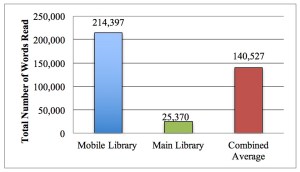
Figure 1. Advanced Level Classes Total Number of Words Read
In the case of advanced main library users, it wasn’t necessarily that the students didn’t read but rather that they tended to choose books well below their level. Records showed that many of these students read books with less than 300 headwords, which accounts for the low average of words read.
According to the online survey, most advanced students had a positive experience using graded readers. Advanced students using the mobile library rated their overall experience slightly better than students using the main library (Figure 2).

Figure 2. Advanced Students’ Overall Rating of Reading Grade Readers using the Mobile Library/Main Library
Intermediate level
Intermediate level classes had a reading goal of 40,000 to 60,000 words with quizzes passed, although neither group achieved this goal. Findings showed that the intermediate main library group read 8% more words than the mobile library group with 791 words above the combined average (Figure 3).
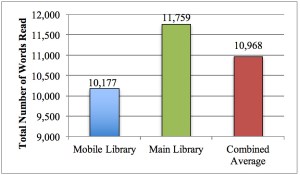
Figure 3. Intermediate Level Classes Total Number of Words Read
The survey results pointed to a general acceptance of graded readers, although 10% more main library users disliked them compared to the mobile group (Figure 4).
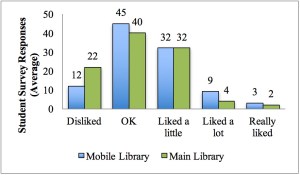
Figure 4. Intermediate Students’ Overall Rating of Reading Grade Readers using the Mobile Library/Main Library
Basic level
The reading goal for basic level classes was set at 30,000 words with quizzes passed, although neither group achieved this goal. With the basic level classes, the main library was very unpopular, especially with 2nd year students. For those classes using the main library, many basic students never took an MReader quiz. The mobile library group at the basic level read on average 81% more than the main library group and 1,566 words above the combined average (Figure 5).
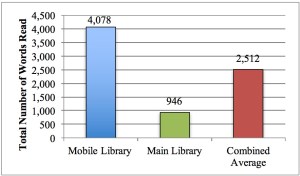
Figure 5. Basic Level Classes Total Number of Words Read
In general, basic students showed an overall acceptance to graded readers. Students did not express a strong liking for them in either the mobile library or the main library group (Figure 6).
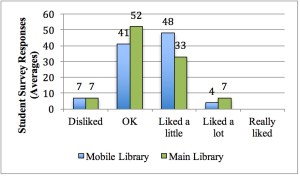
Figure 6. Basic Students’ Overall Rating of Reading Grade Readers using the Mobile Library/Main Library
Combined usage
Although the reading goals for each level differed, overall the mobile library group read on average 89% more than the main library group and 35,275 words above the combined average (Figure 7). 59% of students using the mobile library took a book once a week, compared to only 24.8% from the main library; therefore, reading consistency was higher for the mobile group. In terms of the number of MReader quizzes passed, the mobile library users also exceeded the main library users.
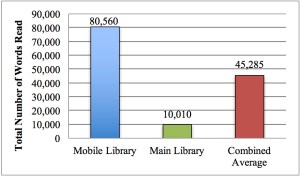
Figure 7. Combined Classes Total Number of Words Read
The combined results of the survey showed very little differences between the two groups in terms of their overall rating of graded readers (Figure 8).

Figure 8. Combined Classes’ Overall Rating of Reading Graded Readers using the Mobile Library/Main Library
Supplementary resource
After the initial introduction of books in the classroom, many teachers reported that some students went to the library to seek other titles. The mobile library for many students appeared to act as a springboard for self-actuated learning as 31% of mobile users reported going to the main library for graded readers. Those who went to the main library did so because they wanted to take out more books (24%) or wanted different books than what were offered in the class (31%). It should be noted, however, that data collection using MReader is unable to distinguish the exact number of books or words mobile users read from the main library.
Non-Readers
Within the data there is a subset of students who had MReader accounts but never took a quiz. 69% of these students were registered main library users, compared to 26% who used the mobile library. According to the survey, 47% (main library users) and 40% (mobile library users) of non-readers gave time (“I did not have time to read Graded Readers.”) (Appendix A & B) as a reason, while another 30% in both groups cited disinterest (“I’m not interested in reading Graded Readers.”) (Appendix A & B) as the main reason for not reading graded readers.
Discussion
It was noted that the mobile library group had a higher reading consistency than the main library group; however, this should be put into perspective as students using the main library could take up to five books at a time, compared to students using the mobile library who could take three books from the cart plus five books from the main library. There appears to be greater accessibility to graded readers through the mobile library.
As to why mobile library users exceeded main library users in terms of the number of MReader quizzes passed, it could be because the books in the mobile cart were not only geared to the class level, but that students could find necessary support and guidance for ER in the classroom environment. Looking at the intermediate main library users in particular, they tended to take more chances and read a variety of levels unlike the advanced main library group.
One possible factor behind the differences in mobile and main library reading outcomes is the classroom environment. Perhaps the mobile library assists in the creation of a classroom community of learners. Shibata (2016) asserts that a “learner community” is important for learners to achieve their intended reading outcomes. By bringing books to class, it is an opportunity for students to talk about and recommend the books that they have read to their classmates. Not only is it a chance for students to socialize but also to motivate each other to read (Davis, 1995). In addition, teacher-student interaction is essential to ensure students select suitable readers, receive support, and are able to ask questions related to ER (Shibata, 2016). Obviously, the manner in which the classroom teacher approaches ER can also influence reading outcomes. In many ways, the mobile library does shows encouraging results, but the main library does play an important role by making students responsible for their own learning and initiative.
Recommendations
Although every class is different, there are ways to ensure ER success regardless of the approach. Firstly, to ensure students read according to their level, set the number of words the student is expected to read at the beginning of the term in accordance to the student’s proficiency level. This is important as language learners who read above or below their level in all likelihood could become demotivated or disinterested (Grabe, 2009; Stoller, 1994). Secondly, to motivate students to read, teachers could require them to bring graded readers to class each week and allow time for students to briefly report on or recommend books to their classmates. By monitoring what students read either through MReader or in-class checks, students will be encouraged to read more. It is important to provide consistent feedback, as some students will need encouragement, reminders, and coaxing to read more (Stoller, 1994). Additionally, giving 10 to 15 minutes in-class silent reading time, especially when introducing the program, may help “hook” students on ER regardless of method (Stoller, 1994). In terms of non-readers, a better approach to show and make students understand the overall benefits associated with ER is needed.
Limitations and Future Research
Future studies need to explore influencing factors in reading outcomes and learner motivation such as classroom environment (e.g. classroom management of ER, how enthusiastically ER is promoted, and cooperative learning). One unknown variable is the assignment of a grade percentage to the total number of words read, which could obviously be a strong motivational factor. A case study using select classes of the same level, under one teacher using consistent classroom management of ER may gain greater insight into the extent that classroom environment influences reading outcomes.
Clearly, a better understanding of what motivates autonomous learning needs to be addressed. The present study was unable to find significant differences in terms of learner attitudes towards ER between the mobile and main library users. A survey with more open-ended questions and follow-up interviews of the participants might garner more detailed results.
Conclusion
ER is an ideal way to develop autonomous learning, and a mobile library is a great initiator. So, in terms of ensuring that students actually read or at least attempt ER, the mobile format appears in many ways more successful. Considering the financial investment that an ER program requires (Davis, 1995), a library with little traffic constitutes as a highly undervalued resource. A great deal of planning and energy needs to be devoted to an ER library and perhaps even more to a mobile library. Having books in the classroom is advantageous as the books are readily accessible (Bullard, 2015). Although practices vary between institutions, the authors strongly urge other educators to consider implementing a mobile library that is accessible, level appropriate, and provides learners with greater opportunity to share what they have read and in turn motivate others (Grabe & Stoller, 2002). As students read outside the classroom, ER programs need to not only motivate learners, but also give validity to the task; therefore, systems such MReader are vital. MReader quizzes not only provide users with concrete reassurance that they comprehend the reading but also help them meet their reading goals and consequently assist with learner autonomy.
Notes on the contributors
Catherine Cheetham is a Junior Associate Professor at Tokai University with over 20 years experience in EFL/ESL. Her main interests are extensive reading, motivation and materials development.
Melody Elliott is an Associate Professor at Tokai University with over 20 years of EFL teaching experience. Educational interests include extensive reading, ESP, and content-based instruction.
Alan Harper is a Junior Associate Professor at Tokai University with over 15 years of EFL teaching experience. Research interests are teaching pedagogies, how they affect student identity as English L2 speakers and the relation to student motivation in the classroom.
Mika Ito is an Associate Professor at Tokai University, Kanagawa, Japan. She has taught primary school students to adults in Japan and the US. Her current areas of interests include primary school English and teacher education.
References
Broady, E., & Kenning, M. (1996). Promoting learner autonomy in university language teaching. London, UK: CILT.
Bullard, N. (2015). Libraries. In R. Day et al., Extensive reading (pp. 56-62). Oxford, UK: Oxford University Press.
Davis, C. (1995). Extensive reading: An expensive extravagance? ELT Journal, 49(4), 329-336. doi:10.1093/elt/49.4.329
Day, R., & Bamford, J. (1998). Extensive reading in the second language classroom. Cambridge, UK: Cambridge University Press.
de Burgh-Hirabe, R. (2011). Extensive reading and L2 reading motivation in Japanese as a foreign language: A case study of New Zealand high school students (doctoral thesis). University of Otago, Dunedin, New Zealand. Retrieved from https://ourarchive.otago.ac.nz/handle/10523/1711
Dörnyei, Z. (2001). Motivational strategies in the language classroom. Cambridge, UK: Cambridge University Press.
Dörnyei, Z., & Ushioda, E. (2011). Teaching and researching motivation (2nd ed.). Harlow, UK: Pearson Education Limited.
Ellis, G., & Sinclair, B. (1989). Learning how to learn English: A course in learner training. Cambridge: Cambridge University Press.
Grabe, W. (2009). Reading in a second language. Cambridge, UK: Cambridge University Press.
Grabe, W., & Stoller F. (2011). Teaching and researching reading (2nd ed.). London, UK: Routledge.
Judge, P. (2011). Driven to read: Enthusiastic readers in a Japanese high school’s extensive reading program. Reading in a Foreign Language, 23(2), 161-186. Retrieved from http://nflrc.hawaii.edu/rfl
Khodabandehlou, M., Jahandar, S., Seyedi, G., Mousavi, R., & Abdai, D. (2012). The impact of self-directed learning strategies on reading comprehension. International Journal of Scientific & Engineering Research, 3(7), 61-69. doi:10.1.1.302.2456
Kirchhoff, C. (2013). L2 extensive reading and flow: Clarifying the relationship. Reading in a Foreign Language, 25(2), 192-212. Retrieved from http://nflrc.hawaii.edu/rfl/October2013/articles/kirchhoff.pdf
Lake, J. (2014). Curious readers and interesting reads: Developing a positive L2 reading self and motivation through extensive reading. Journal of Extensive Reading, 2, 13-27. Retrieved from http://jalt-publications.org/access/index.php/JER/article/view/1150
Matsubara, J., Lehtinen, B. (2007). Promoting Autonomy in a Reading Classroom. Proceedings from the third Independent Learning Association 2007 Conference: Exploring theory, enhancing practice: Autonomy across the disciplines. Chiba, Japan: Kanda University of International Studies. Retrieved from http://www.independentlearning.org/uploads/100836/ILA2007_025.pdf
Robb, T. (2015). Quizzes – A sin against the sixth commandment? In defense of MReader. Reading in a Foreign Language, 27(1), 146-151. Retrieved from http://nflrc.hawaii.edu/rfl/April2015/discussion/robb.pdf
Shibata, S. (2016). Extensive reading as the first step to using the SALC: The acclimation period for developing a community of language learners. Studies in Self-Access Learning Journal, 7(3), 312-321. Retrieved from https://sisaljournal.org/wp-content/uploads/2016/10/shibata.pdf
Stoeckel, T., Reagan, N., & Hann, F. (2012). Extensive reading quizzes and reading attitudes. TESOL Quarterly, 46(1), 187-198. doi:10.1002/tesq.10
Stoller, F. L. (1994). Developing a focused reading lab for L2 students. Reading in a Foreign Language, 10(2), 33-53. Retrieved from http://nflrc.hawaii.edu/rfl/PastIssues/rfl102stoller.pdf
Appendices
Please see paginated PDF version

